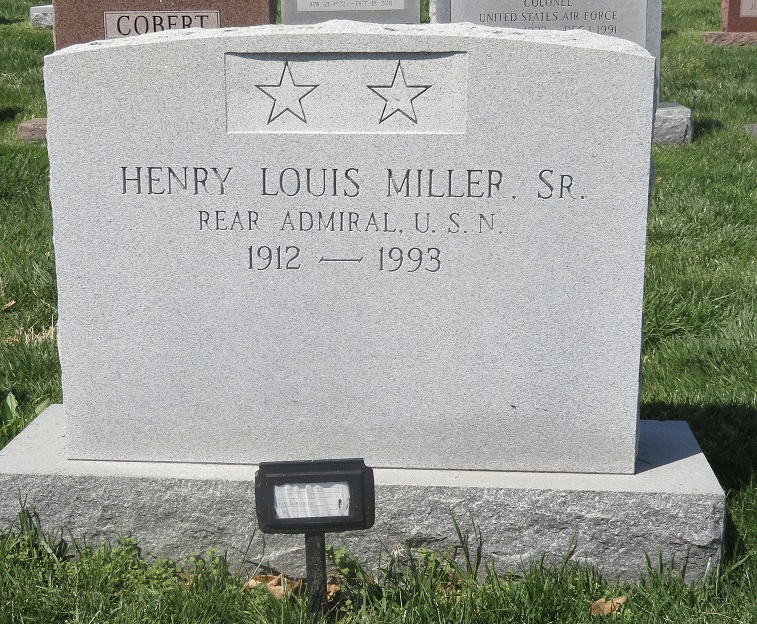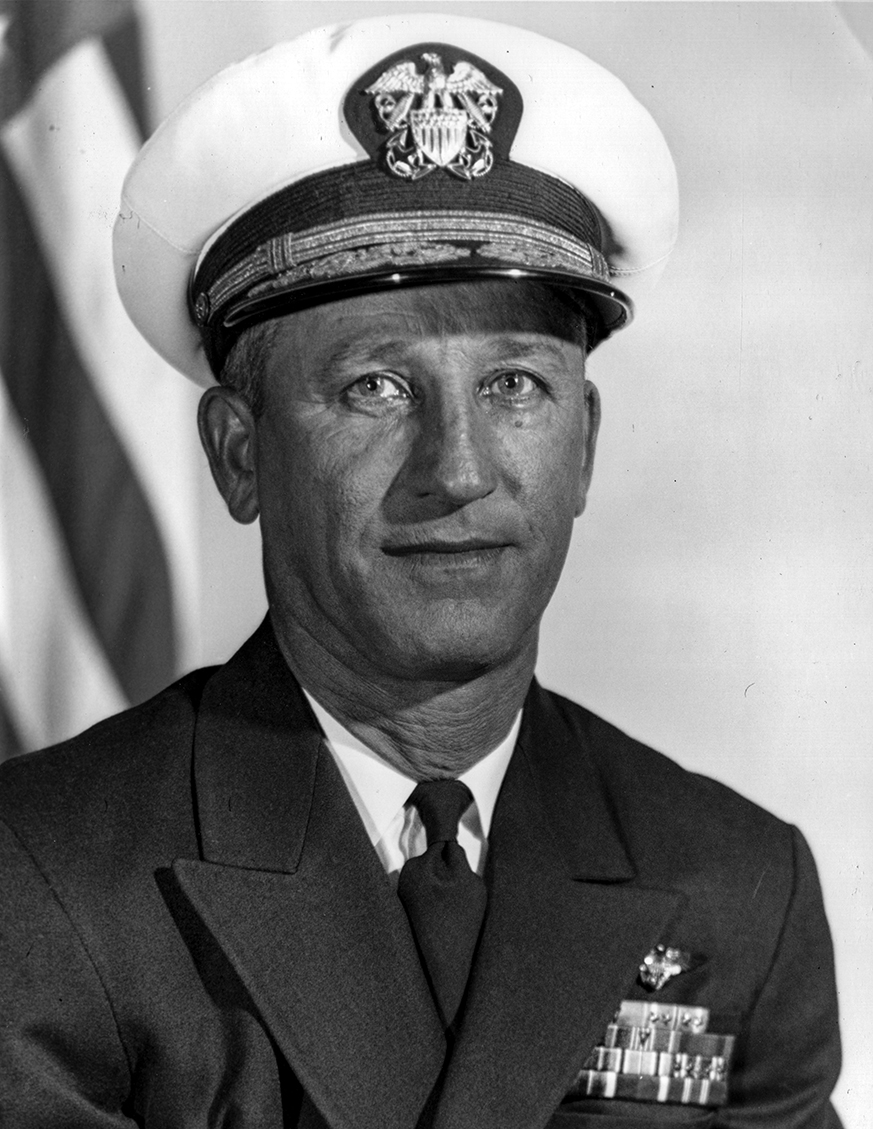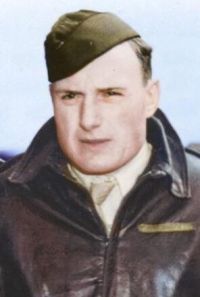Raider in the spotlight
Henry "Hank" Miller
Lieutenant Henry Louis "Hank" Miller, Sr.
Born 17 July 1912 in Fairbanks, Alaska. Henry L. Miller died on 25 Januari 1993 in Leonard Town, Maryland. Buried Arlington, Virginia. His nickname was Hank.

When the Japanese attacked Pearl Harbor, Miller was still assigned as a navy flyer instructor at Ellyson Field near Naval Air Station (NAS) Pensacola, but he earnestly desired to return to fighters, using a cross-country flight to Philadelphia to stop in Washington D.C. and check in at the Bureau of Aeronautics requesting assignment to a front-line squadron. His efforts proved unsuccessful, but back at Pensacola the arrival of a unique set of orders issued on February 28, 1942, provided an unlikely avenue to the war zone. Miller was to report to Eglin Field in nearby Ft. Walton Beach for an unspecified temporary duty. Given an old SBU biplane for the brief flight to the Army Air Forces field, Miller reported to a colonel there, who indicated he had no idea by a Navy carrier pilot was there. Having been briefed before his departure from Pensacola about his purpose for traveling to Eglin, Miller asked the colonel if he “knew anything about Lieutenant Colonel Doolittle’s detachment there.”
Over the course of the ensuing weeks, Miller trained the Army Air Forces pilots to take off from the deck of an aircraft carrier, giving them the benefit of knowledge obtained flying from flattops.Miller was known as an idealistic man.
As said Lieutenant Henry "Hank" Miller came from the Pensacola, Florida Naval Base and was selected as a Navy officer to educate the talented crews who volunteered to carry out the mission to learn about the use of the Navy and its pilots. learn to take off with the bombers from an aircraft carrier. As a naval man, he had experience in these matters.
Although the pilots of the 24 bombers had no experience at all with these matters, Miller's arrival was not really well received.
Lieutenant Henry “Hank” Miller recalls

At Eglin Field, Florida, had I been set aside for the work. I climbed into a B-25—I had never seen one—as copilot.
I told them that when you make a carrier takeoff, number one, you held both feet on the brakes. For this plane, we’ll try one-half flaps. I asked them how much manifold pressure we could hold on for—say, 30 extra seconds—and put the stabilizer back about three-fourths. With engine full bore, I told them to release the brakes.
They had been taking off at 110 miles an hour. (177 km/h). On the first takeoff with me, they observed an air speed of 65 to 67.(104 km/h) They said, “That’s impossible.” I said, “Okay, we’ll try it again.” The second takeoff the same way showed an air speed of 70. (104 km/h) They were then convinced that a B-25 could take off at that slow speed.
For the run to Japan, the B-25 was going to be at 31,000 pounds (14050 kg)—2,000 pounds (900 kg) over the maximum designed load. I checked out all the pilots for light loads, then intermediate, then the maximum load they would be taking on the raid. Everyone did pretty well.
The last day came. I checked out all the crews except the last man, a pilot by the name of Lieutenant Bates. He was letting his plane fly him. I told him he had to try it again. He took off in a skid. He pushed into a harder skid. He didn’t push the throttles to the floorboard, and the plane settled right back down on the runway on its belly.
The next day, Jimmy Doolittle came back from Washington and said, “I heard you had an accident.” I said, “Yes, sir. Nothing wrong with the technique or the airplane. What was wrong was the pilot.” Doolittle said, “Okay. You know, I’m going to the West Coast, and we’re going to pick up another instructor out there to give us some more of this.”
I said, “You know, Colonel, it’s a matter of professional pride with me. I don’t want someone out there saying let’s start all over again with this technique. I’d like to go with you.” He said, “Okay, if it’s alright with Washington, you can fly out with me.”
We put the planes in the depot at Sacramento to get them ready to go aboard the carrier. As a plane came out of overhaul, I’d take it up with a crew to Willows, California—give them takeoffs at Willows. The last day, Doolittle said we’re going to fly down to Alameda, go aboard the Hornet. We were taking extra crews, 15 planes and 18 or 19 crews. He told me to list the crews in order of their expertise.
I did, and Doolittle and his staff asked why Bates wasn’t on the list. I told them all the mistakes he had made after his plane had crashed. They didn’t take Bates. Just before going aboard the Hornet, Doolittle asked again about the crews. I said there would be no trouble. “To show you, I’ve had less B-25 time than them. Take me and a 16th plane aboard. When you get 100 miles out, I’ll launch and deliver it back to South Carolina,” I said.
Miller went on board with the extra plane and accompanied the raiders to their launch point against Japan.
The Heroes of Doolittle's raid on Japan in april 1942
by Mr. Geert Rottiers
The book will be available soon.

